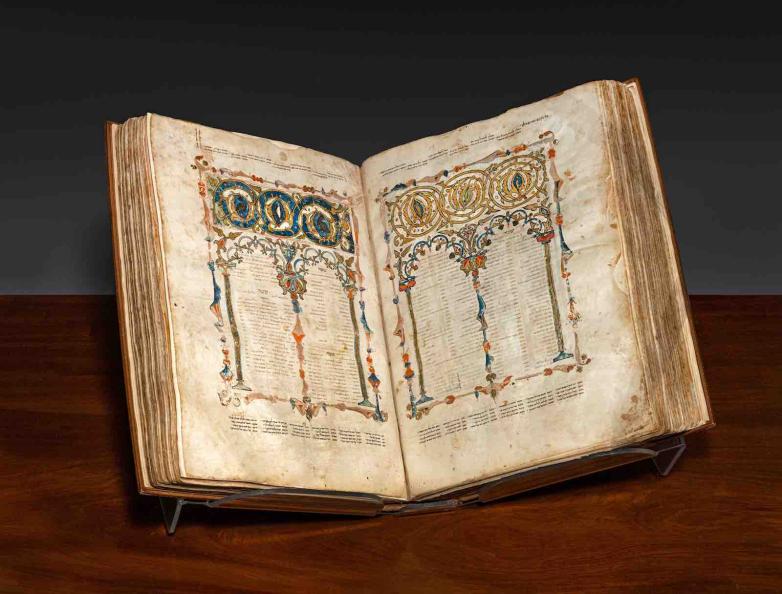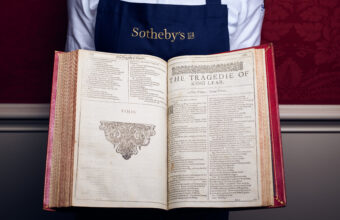The Shem Tov Hebrew Bible will be sold at the end of this month. Sotheby’s in New York have put an estimate of $5 million to $7 million on the 14th century book.
The document was written in 1312 by Rabbi Shem Tov Ibn Gaon at Soria in Castille, Spain.
It is an important relic of the Golden Age of Spain, a period when Jewish, Christian and Islamic traditions coexisted.
Shaul Sedler-Feller, senior Judaica specialist for Sotheby’s, told Fine Books and Collections: “The Shem Tov Bible has long been recognized as a tour de force of biblical and kabbalistic scholarship and constitutes a monument to the medieval Spanish tradition of Hebrew bible illumination.
“There is a compelling mystique to this manuscript, deriving not only from its history and beauty but from the kabbalistic mysteries preserved within.”

The beauty of the Shem Tov Bible is equal to the religious importance of its text.
The text of the book is important. It is a direct link to the lost Codex Hilleli, a circa-AD 600 document that is believed to be the most direct transmission of the Hebrew Bible.
Its author added kabbalistic (a Jewish mystical tradition) elements to his document, including one of only four surviving complete copies of the Sefer Tagei text.
The book last sold in 1984. It realised $825,000, a record at the time for a Hebrew manuscript.
O that occasion it was sold as part of the David Sassoon collection, probably the most important collection of Hebrew manuscripts in the world.
Rabbi Shem Tov created the Bible for personal use and it travelled to Egypt then (modern) Iraq. It was in the Seror family collection during the 19th century, and David Sassoon bought it in 1909.
The Bible’s text is enhanced with incredibly skilled and intricate scribal work throughout, including illumination that celebrates Jewish, Islamic and Christian artistic traditions from the mediaeval period.
Religious texts are among some of the most valuable books in history. They are often bought by (or for) national collections. Last year, the Codex Sassoon, a Hebrew Bible, realised $38.1 million at auction and was given to the Museum of the Jewish People.
The British Library bought the Sherborne Missal in 2001 for over $21 million.
Older manuscripts, often made of long-lasting animal-based materials like vellum or parchment can last surprisingly well. Although the innovations of paper production massively increased access to the written word, few modern documents have the same durability.
The Shem Tov Bible will be shown at Sotheby’s, New York before its sale on June 27.











